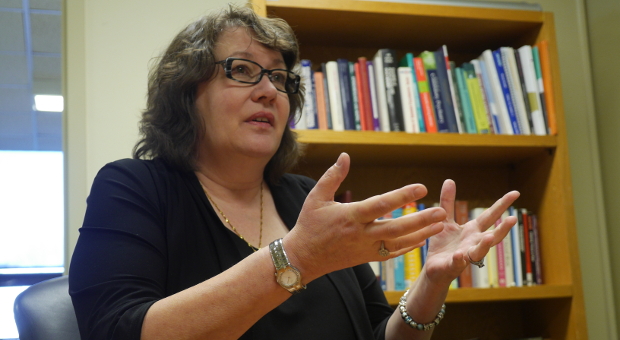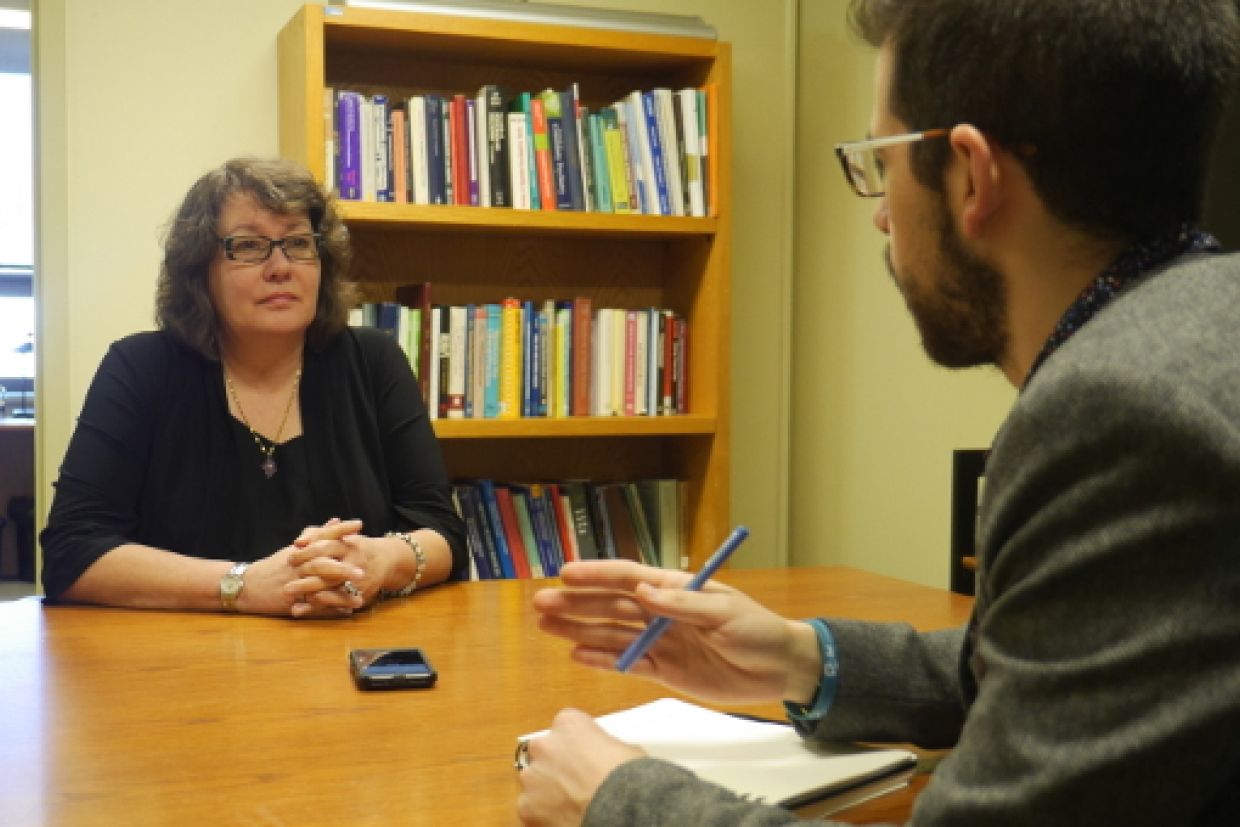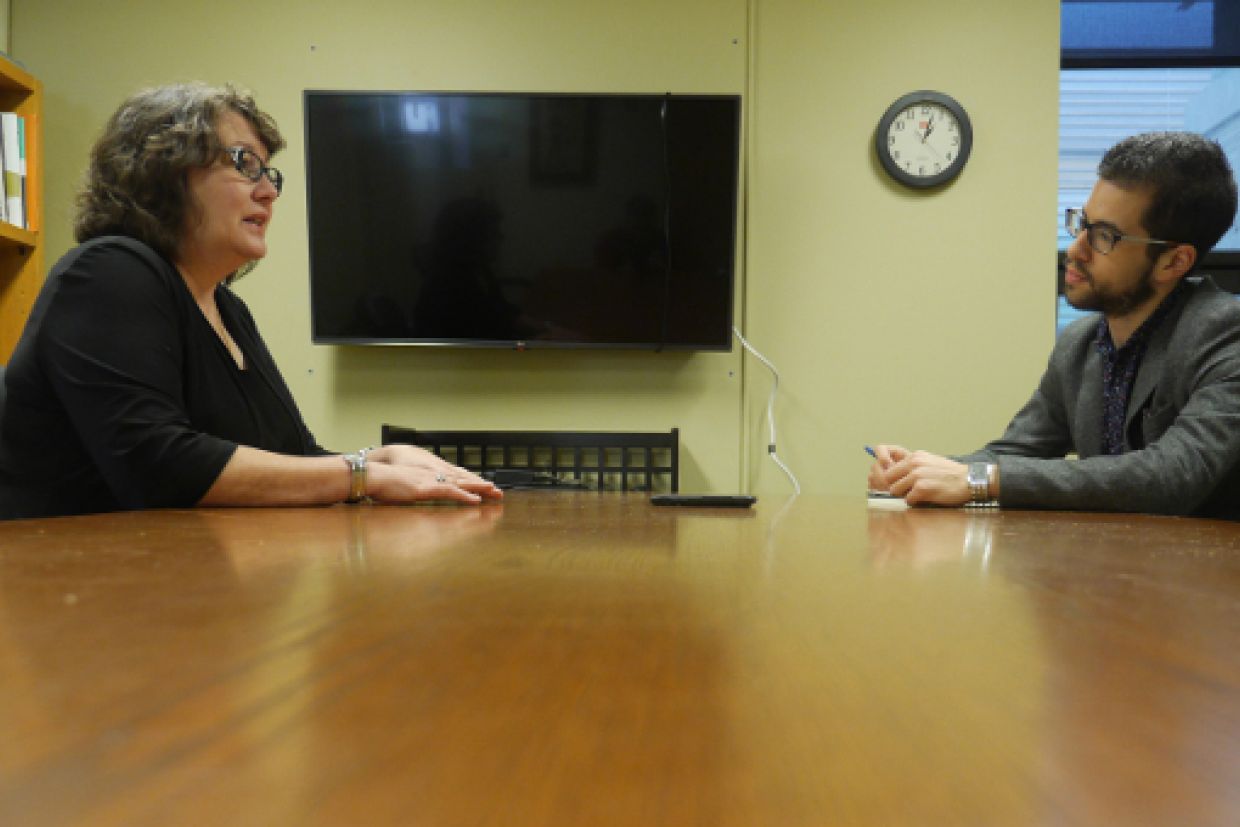In preparation for Bell Let’s Talk Day, former rector and long-time mental health advocate Mike Young, Artsci’16, sat down to talk about stigma, social justice, and the future with Dr. Heather Stuart, a professor in the Department of Public Health Sciences and the holder of the Bell Mental Health and Anti-Stigma Chair.

Q: You have been at the forefront of the mental health and anti-stigma research that we’ve had at Queen’s, so I’m interested in hearing what your observations have been about where we are now compared to where we were when you started here.
A: When I first started in this area, nobody was talking about stigma. Nobody thought mental health research was worthwhile, and nobody was paying attention. People wondered why I was here. Why is this important? It was a really low priority.
Since that time, it’s almost unimaginable to think that we have companies like Bell Canada, Morneau Chappelle, IBM, all turning their attention to mental health, and recognizing that stigma is a big problem.
We’ve gone from being completely under a rock to the forefront of people’s consciousness in a very short period of time. It has been a watershed for those of us who work in mental health – those few of us who work in the stigma world – because we’ve gone from having no or low status to an insatiable demand for what we’re doing.
There hasn’t been much of this research in the past because there was never any money for it. Now we have students who see prospects for their future in this – we’re finally able to see some human capital and some interest. It’s been a complete about-face.
Q: Moving to the content of your message, the things we've tried to help young people understand about mental health – about treating each other kindly and treating yourself kindly. What do you think the progress has been?
A: It’s been happening slowly, but there is a bit of a sea-change occurring. And I’d like to think we had something to do with it. We’re trying to get to the public health community and help them understand that some of the models that they’re using are outdated and don’t work.
We’ve learned that if you want people to change their behaviours, they have to be front and centre in the process. There has to be some sort of participatory process that is aimed at empowering them. You don’t have to give them a solution. You just have to empower them to want a solution and they’ll figure it out themselves.
It’s a lot of work, though, to get people engaged and involved, but it’s worth it. You can create sustainable change when you get people on the front lines invested in the problem and thinking critically about ways of solving it

Q: Do you see that other institutions are looking at Queen’s for leadership or for some kind of blueprint? What do you see as Queen’s position?
A: I think Queen’s is in a very good position. We have a principal who, right from the start was on a mental health platform. Even before other universities were in on it, he was right there, with his sleeves rolled up. We’ve had good leadership throughout our student wellness initiatives, more than other universities. I think because Queen’s is small, we’ve had an opportunity to work together, as opposed to places where one hand doesn’t know what the other is doing.
When we did the Caring Campus work, we talked to people and let them know what we were doing. We didn’t want to set up a dynamic where we were butting up against people, trying to get them involved.
We got to a point with Caring Campus where the young men were saying that it had a lot to do with their image of themselves, and the masculinity issue. They saw the need to challenge that and challenge what it means to be masculine and not drink because of that pressure, to have the freedom to be healthy and to drink safely.
Q: It makes me think of other things going on in the world right now – the Me Too movement and how that’s very stigma-focused, and various issues in gender diversity and toxic masculinity and feminism. Do you see parallels with what you’re doing? When we talk about sexual violence, we want people not to have to be re-traumatized. How do you see the way your work fits in with the broad spectrum of social justice?
A: It’s very much about social justice. The whole issue of stigma is a social justice issue. People’s social and civic rights are being denied just because they belong to an illness group.
Mental health is at the centre of everything. If we want to make people happier and healthier, it’s a mental health issue. We have to accept that people can have mental illnesses and live happy, healthy, productive lives. We have to get our heads around that and then we have to think about how we can promote that.
Right now we don’t do a very good job in our health systems and our school systems, but if we could get ourselves thinking that this is not only possible, but probable, how could we make it happen? What should we be talking to Grade 1 students about? And Grade 2 students? If you could imagine a trajectory of training or socialization from kindergarten to Grade 12, what kind of message should those kids be getting every single year? If we did that, we wouldn’t have problems by the time kids get to university. They would be so centered and self-assured. We have to do that in conjunction with schools, and many of them don’t want to talk about this stuff. It’s scary. Teachers don’t feel prepared.
We’ve been working with Bell on materials to help teachers feel more comfortable and confident in their ability to talk to students. Even professors in university don’t feel prepared to talk to students. They’ll shuffle them off to disability services, but they don’t know how to make the basic accommodations for them. We’ve got to get our head around how to do that

Q: Looking ahead to your future, what is your next focus going to be? What is the next big thing for you?
A: There are two things. One is we’re working more closely with Bell around evidence-informed decisions that they’re making in their Let’s Talk programming. They’re wanting to support evidence-based programming and they want to know the evidence that these strategies work. So we’re helping them understand. For the first five years, they were content to let us do what our research and they would trot me out when they need me. But now we’re working much more collaboratively and that’s great.
The second big thing is we are working with IBM and the Centre for Advanced Computing here at Queen’s to create a Watson smartphone application that will talk to people in their vernacular language around mental health and mental illness and give them advice about what to do, where to go, what websites to use. It will understand when somebody is quite ill and will triage them to a human being.
It’s called Here for You. You can talk to Here for You anonymously. No one will ever know. You’ll get advice that’s vetted by professionals, so if you want to access resources you will know that a group of people with clinical expertise have decided that it’s a good resource. You’re not taking any risks. And you can promote your own health 24/7, at whatever time is convenient for you.
We are targeting it toward military families to start with because they move around and they go to these remote communities where there are no mental health professionals. There’s no continuity of care. Every two years they’re moving. So if we can get Here for You to be sophisticated enough to take the place of a low-level counsellor, we’re not going to be treating people who are ill, but we will be able to help people who have day-to-day stresses, whose kids may be acting out, who are having trouble adapting to a new environment. I think we’re going to fill a huge gap and help those families live a better life. And once we get that worked out, there’s no reason why we couldn’t talk to other people as well.
We’re going into the technology realm to see how technology can solve the access problem and the maldistribution of resources – which is an issue of stigma. It’s structural stigma. Those two things will be the next ten years of my life.



